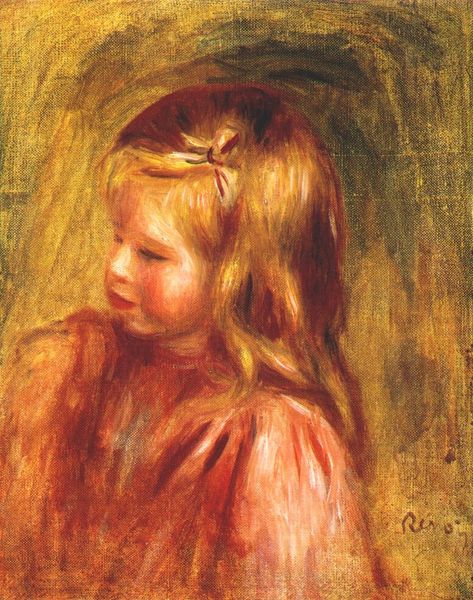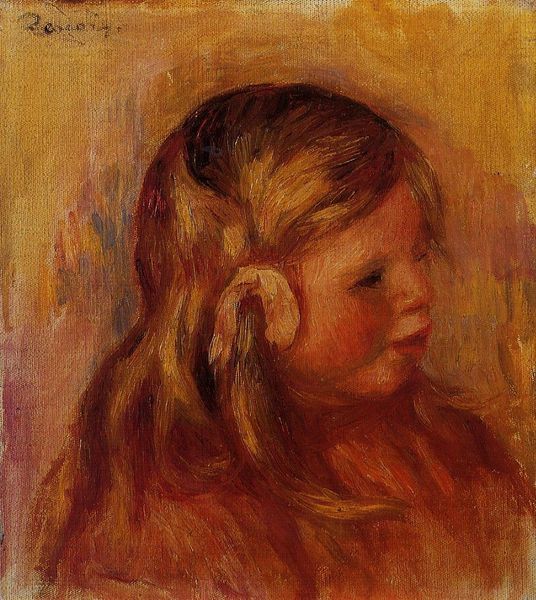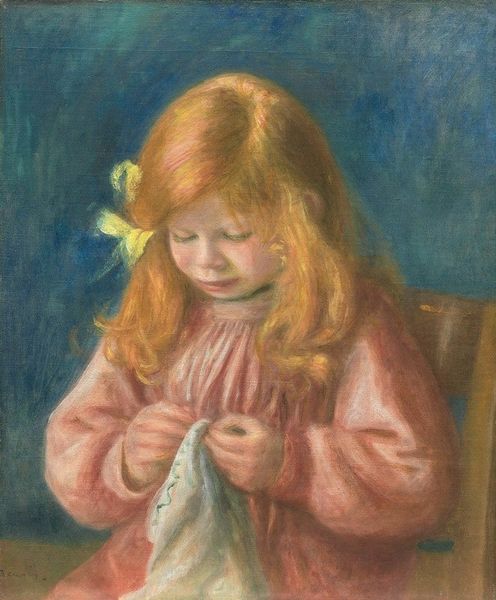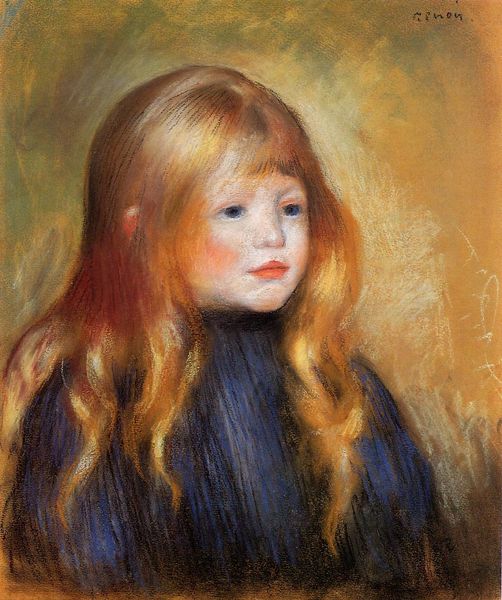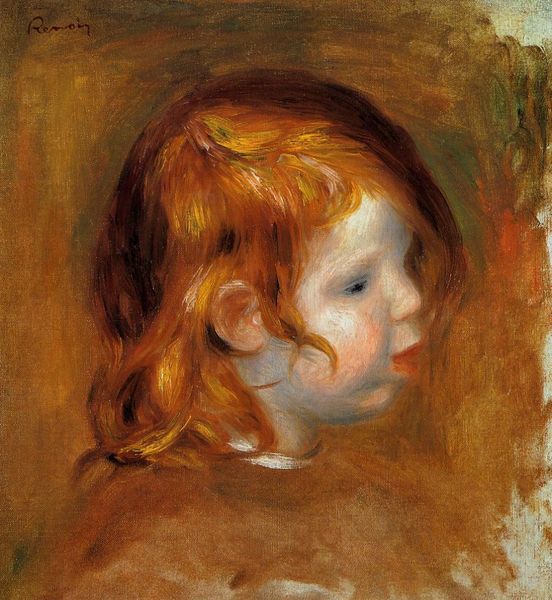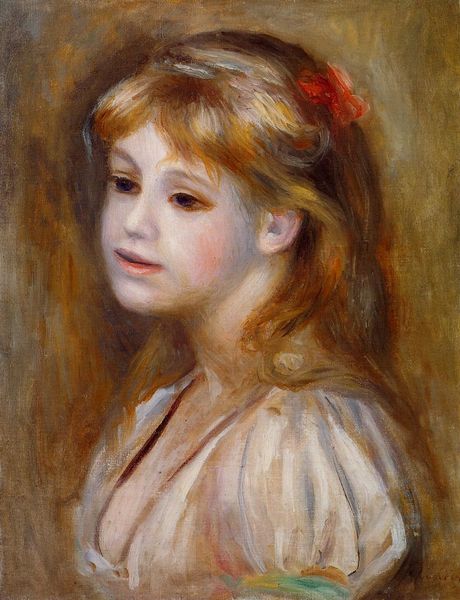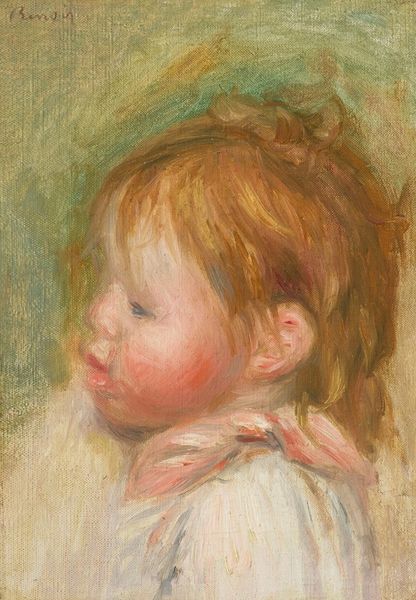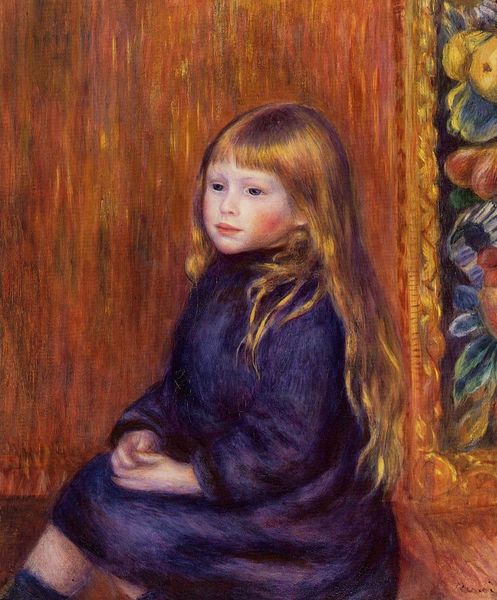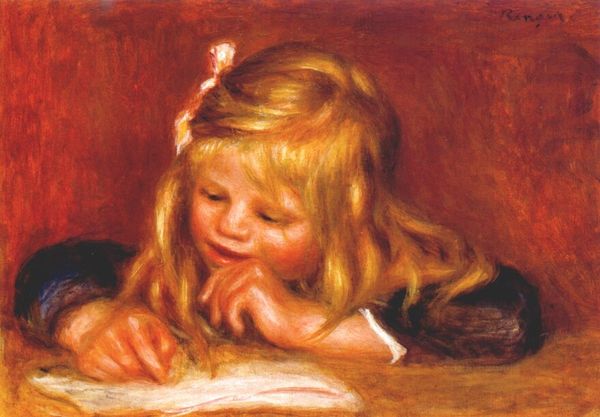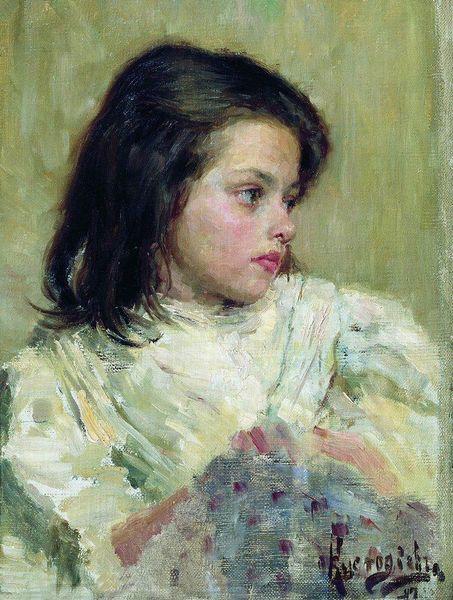
Copyright: Public domain
Editor: This is Pierre-Auguste Renoir’s “Claude Renoir Playing with Dominos,” painted around 1905, rendered in oil on canvas. There's a softness and intimacy to it... What strikes me is the girl's absorption, her quiet concentration. How do you interpret this work, looking beyond its immediate appeal? Curator: Well, I see it as Renoir’s positioning within a discourse on childhood prevalent at the turn of the century. There is a shift in perception, especially within bourgeoise society, that children have individual agency and potential. The painting becomes more than a sentimental portrait. It functions as an argument for recognizing children not as miniature adults but as subjects worthy of contemplation. Considering Renoir's privileged position, what might this suggest about access to and perspectives on childhood in early 20th century France? Editor: That's a great point. I hadn't considered the class aspect. Does the act of playing dominoes itself carry any specific cultural weight or symbolism within this context? Curator: Yes, it's fascinating! Dominoes at the time weren’t just games; they also appeared in educational contexts, sometimes carrying symbolic value as an emblem of structured leisure. Therefore, his interest in a game suggests an exploration of burgeoning approaches to learning and child development during the Belle Époque. It almost hints at progressive thought... but within specific class constraints. How does this nuance our appreciation of Renoir's intent? Editor: I suppose it reminds me that seemingly innocent depictions can also be deeply enmeshed within social structures and cultural shifts. The painting speaks not just of childhood but *whose* childhood was being depicted and how. Curator: Exactly. Understanding this, the artwork fosters critical engagement with historical representation and encourages a wider exploration into similar portrayals that might inadvertently exclude various identity groups. Editor: This lens helps me see so much more in what I initially thought was simply a sweet portrait! Thanks! Curator: Likewise! This dialogue reaffirms the value of art as a bridge between then and now.
Comments
No comments
Be the first to comment and join the conversation on the ultimate creative platform.
